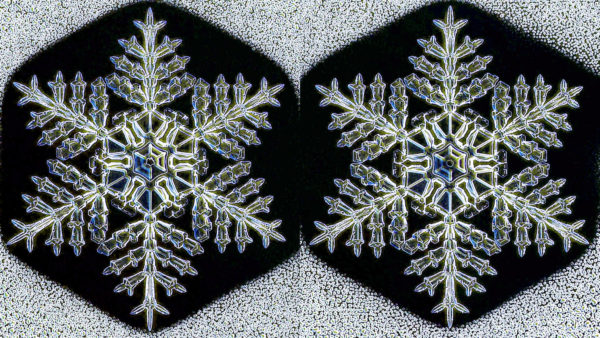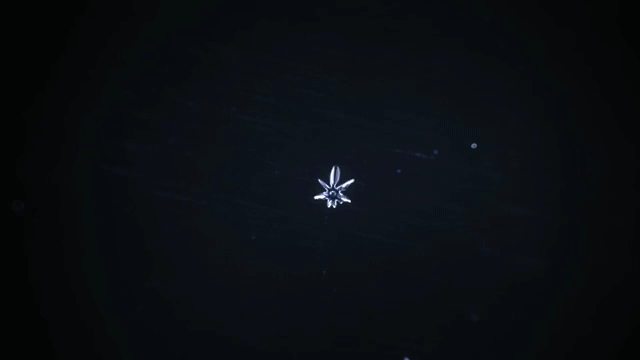"Lives are snowflakes - unique in detail, forming patterns we have seen before, but as like one another as peas in a pod (and have you ever looked at peas in a pod? I mean, really looked at them? There's not a chance you'd mistake one for another, after a minute's close inspection.)" -Neil Gaiman
When you see a snowflake, what you're seeing is a thin crystal of ice, with intricate, hexagonally-symmetric features that reveal themselves under a microscope. Although snowflakes come in a myriad of different shapes and patterns, there's one adage you've heard since you were a kid: that no two snowflakes are alike.
 Two nearly identical snow crystals as grown under laboratory conditions at Caltech. Image credit: Kenneth Libbrecht / Caltech / SnowMaster 9000.
Two nearly identical snow crystals as grown under laboratory conditions at Caltech. Image credit: Kenneth Libbrecht / Caltech / SnowMaster 9000.
From a scientific perspective, is that true? What gives snowflakes their intricate structures, and what does it truly mean for a snowflake to be unique? Do we require the exact same branching structure? Can we obtain that if we create them artificially? Do we require identical-ness down to a molecular or atomic level? And how much snow would we need for that to happen?
 The formation and growth of a snowflake, a particular configuration of ice crystal. Image credit: Vyacheslav Ivanov, from his video at Vimeo: http://vimeo.com/87342468.
The formation and growth of a snowflake, a particular configuration of ice crystal. Image credit: Vyacheslav Ivanov, from his video at Vimeo: http://vimeo.com/87342468.
Come find out the real science behind two snowflakes being alike on this week's Ask Ethan!
More like this
This week, the Free-Ride family welcomed a new member.
It didn't make the news, because skittish media types are mostly based in New York City and thus don't care about anything north of Westchester County, but we had a big snow storm yesterday. It started snowing Sunday night, though, and kept up through pretty much dinnertime Monday.
Some time ago, I gave instructions for making your own paper fractal. I’ve decided to do another today.

I dunno. i see a lot of snowflakes that look alike lol..:
https://www.youtube.com/watch?v=d_KMyppREKQ
Every time you go to a trump rally.
Lol!